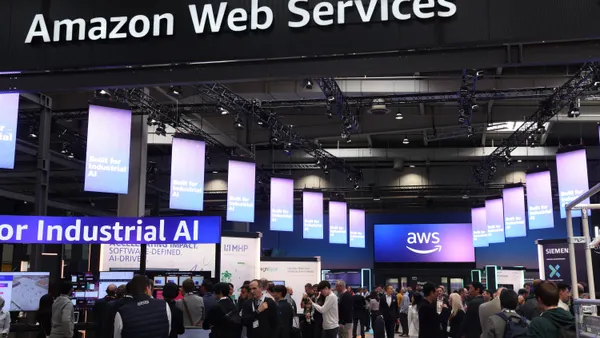Historically, the responsibility for diversity, equity, and inclusion (DEI) initiatives have fallen on People (or HR) organizations, who have led the charge in building welcoming cultures that retain diverse talent and create the psychological safety that employees need to share bold ideas. But with hybrid and remote work becoming permanent, the technology that teams use to interact every day and in every meeting is foundational to an organization's culture. That means IT must view itself as a critical partner in building inclusive digital workplaces that enable teams to uncover creative and innovative ideas.
This may present a paradigm shift for IT, who have typically been trained first and foremost to think about technology through lenses like functionality, reliability, and security. But with studies showing a strong link between an organization's diversity and its innovation and revenue growth, IT has an opportunity to design tech stacks that foster inclusivity, engage talent, and help give an equal voice to all people in the workforce. To do it, IT leaders need to understand basic principles of inclusion and creativity so they can deploy technology that meets these needs.
Understanding the different types of learners
The most basic way that IT can support inclusion efforts is to understand that not everybody receives, processes, and accesses information in the same way. The leading theory breaks people up into groups of audio, visual, reading/writing, and kinesthetic learners, and technology should offer all types of learners the ability to communicate in a way that fits their strengths.
The differences in learning styles present a challenge in virtual and hybrid teams, where the majority of our collaboration is split between tech-enabled virtual meetings which appeal most strongly to audio learners, or text-heavy messaging apps and email, which require near-constant reading and writing. Given the complexity of modern digital work, there's a broad swath of talent that might struggle to comprehend and contribute to rapidly evolving projects through these mediums. In fact, one study found that after three days, people retained only 10-20% of written or spoken information but almost 65% of visual information - meaning the most common methods of collaboration aren't best suited for retention.
Activating the two types of thinking
Just as there are different ways to learn, there are different levels at which our brains engage and think. In his book, Thinking Fast and Slow, Daniel Kahneman identifies System 1 thinking as the reactionary thinking that helps us do things like recognize people's faces and answer simple questions from memory. System 2 thinking, on the other hand, is the thinking that comes with a deeper level of concentration and allows us to analyze problems and think creatively.
System 1 thinking interferes with brainstorming when the first and loudest ideas (and especially those coming from the most-senior attendee) begin to dominate, creating a groupthink environment where better ideas can't break through. Trained facilitators activate system 2 thinking in their workshops by building silent and anonymous brainstorming time into their agendas, where they give attendees time to think through ideas without speaking over each other. Then, they'll review the ideas anonymously to consider each idea on its own merit rather than based on who it came from. These facilitation practices can help drive the feeling of belonging that comes from knowing your ideas are heard and considered equally.
Overcoming resistance to creative ideas
Research has found that overall, we may not view creativity as positively as we believe we do. A recent study demonstrated that people often have an implicit bias against creative and innovative ideas - perhaps driven by the fear of change compared to the safety of the known. Creative thinkers thus need to work extra hard to convey their ideas clearly up the management chain in a business and gain the buy-in necessary to bring innovations to life.
We've already discussed how long, written project briefs may not be the clearest way to explain complex ideas to everyone, and real-time meetings may fail to engage all attendees. What works better are diagrams, sketches, and visual prototypes working in conjunction to drive excitement for ideas. But in most organizations, the best-suited technology for these kinds of documents are dated slide-presentation tools that require outside-the-box ideas to be dumbed down to fit inside-the-box of their limitations.
In her paper Evaluating the Impact of Design Thinking in Action, Jeanne Liedtka notes that one benefit of the innovation process is that it allows teams to "achieve alignment across their differences through an emphasis on tangibility and visualization, the use of prototypes, and rapid cycles of iteration and experimentation, fostering shared understanding."
All it takes is the basics
The connection between DEI and creativity runs deep, and a whole organization must align to make inclusive workspaces that employees view as safe places to innovate. By understanding these basics of inclusion and creativity, IT can better design a collaboration stack that drives inclusion and creativity in the workplace.
The three concepts described above can all be addressed by adding a visual layer to an organization's collaboration stack. Visual collaboration tools can help all kinds of learners express and comprehend complex ideas more clearly than meetings or written communication. Online whiteboards can help turn meetings into inclusive workshops that support the best practices for facilitating meetings that engage system 2 thinking. And visual workspaces can connect creative ideas to the context needed to build support for them and move them forward in an organization. Especially in hybrid and virtual organizations, IT is an important partner in giving teams the tools they need to drive innovation.










